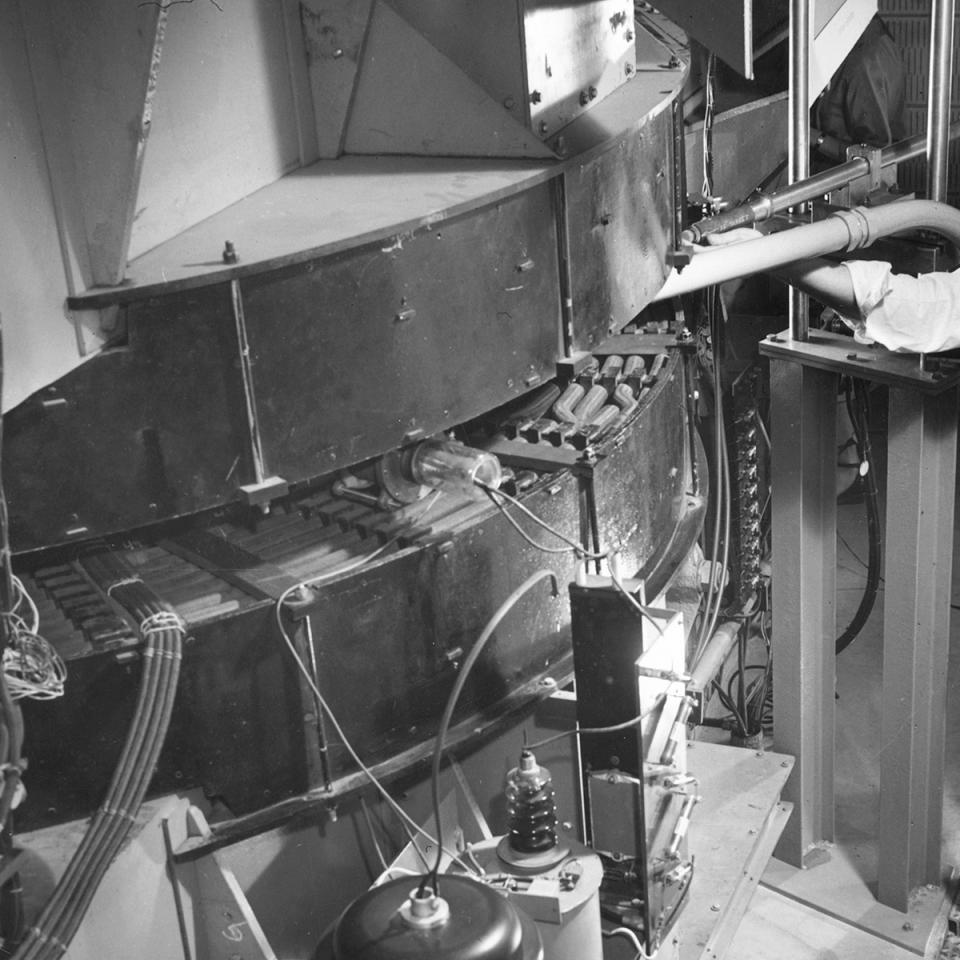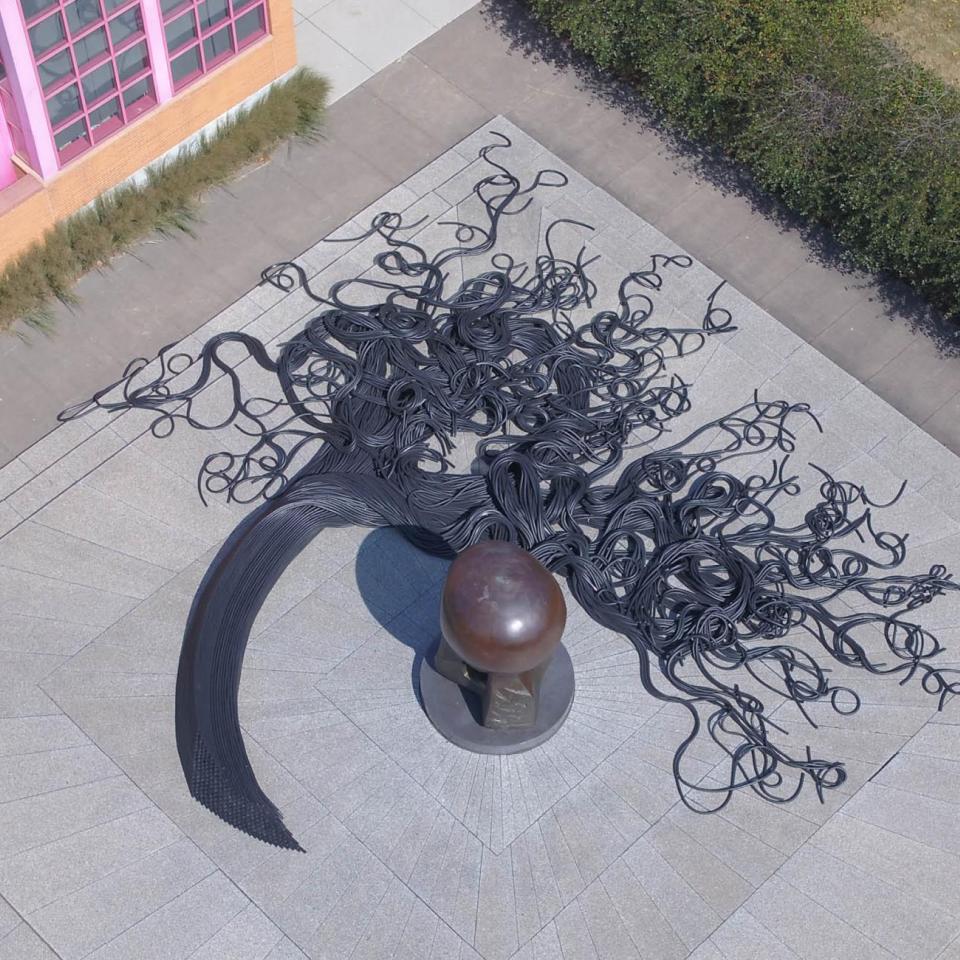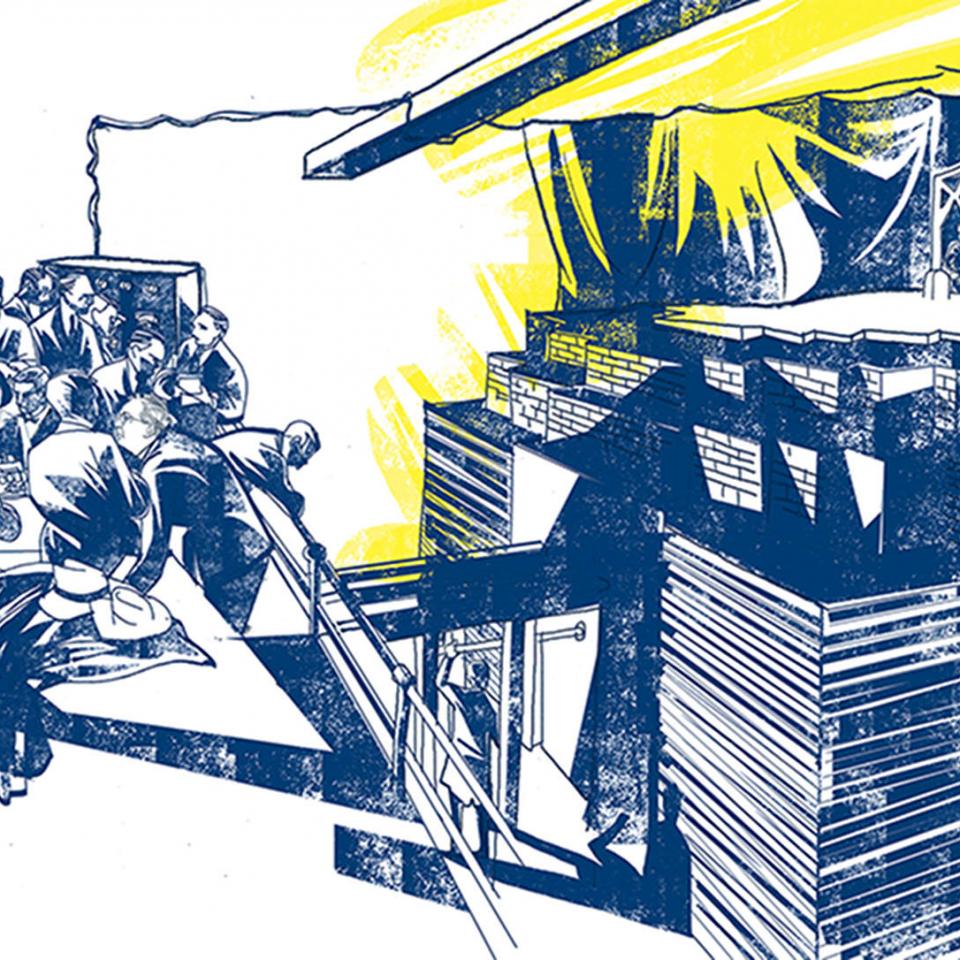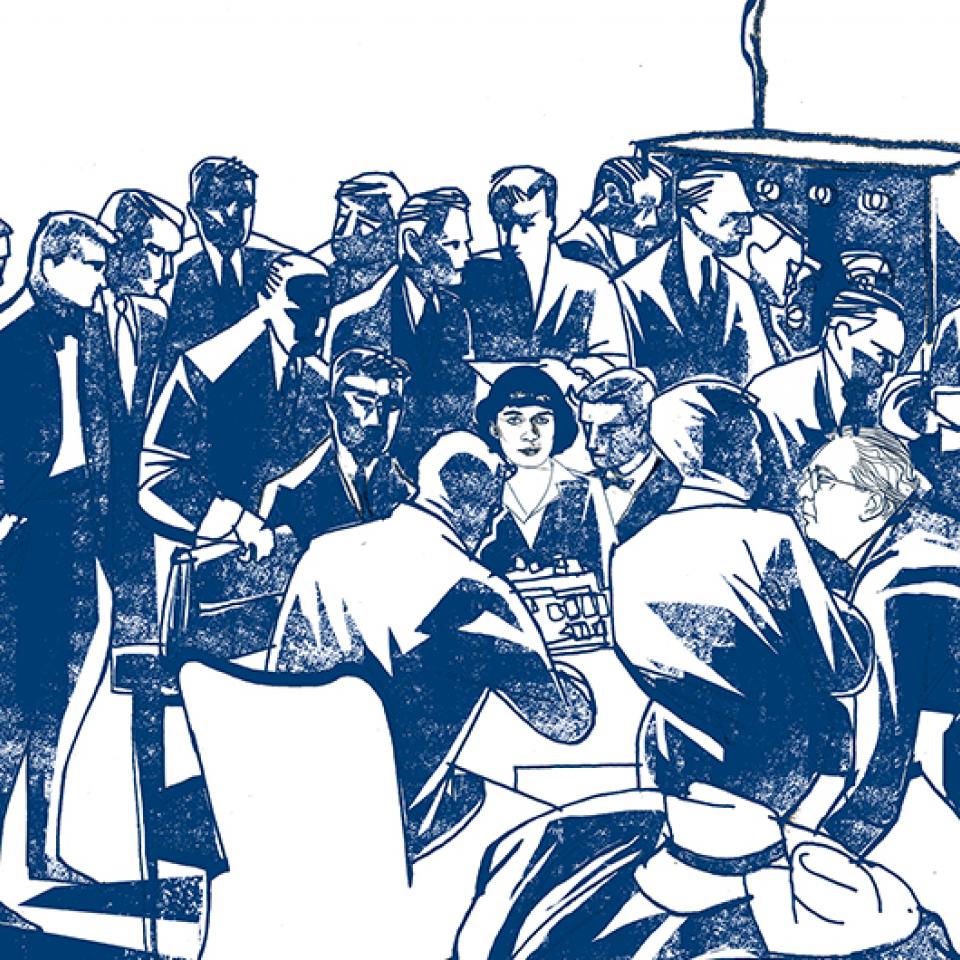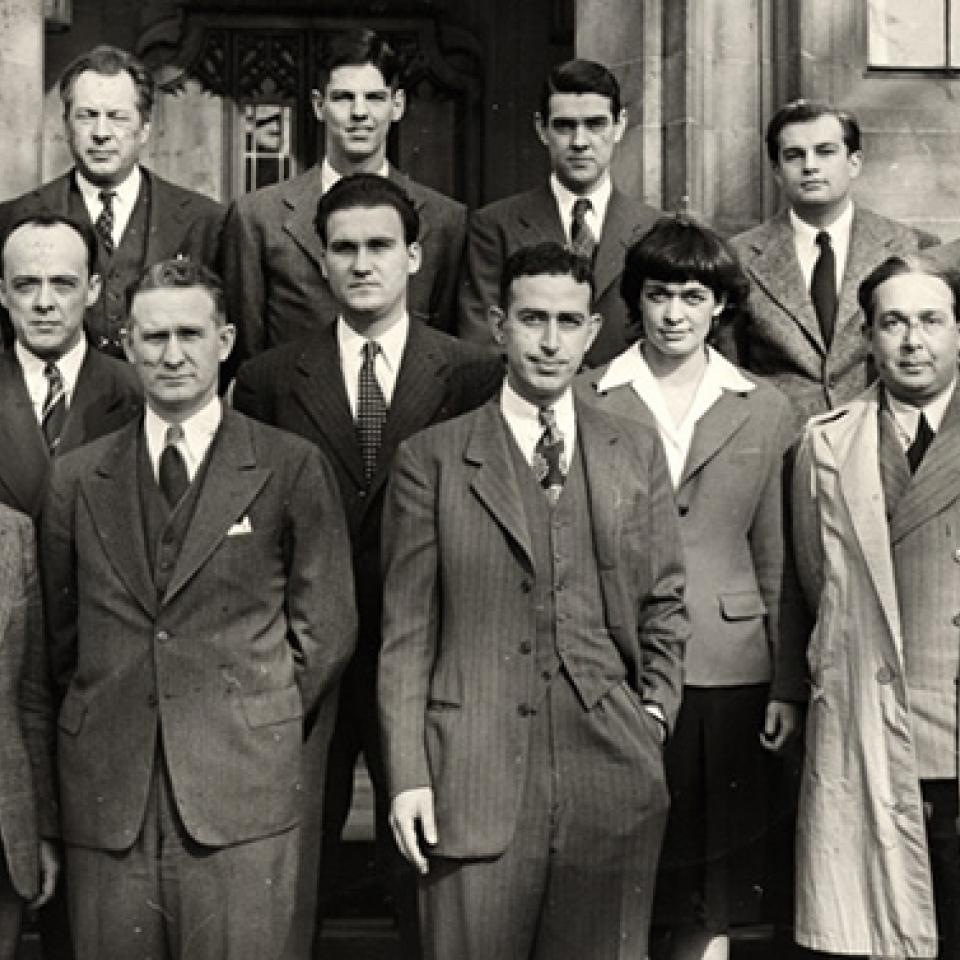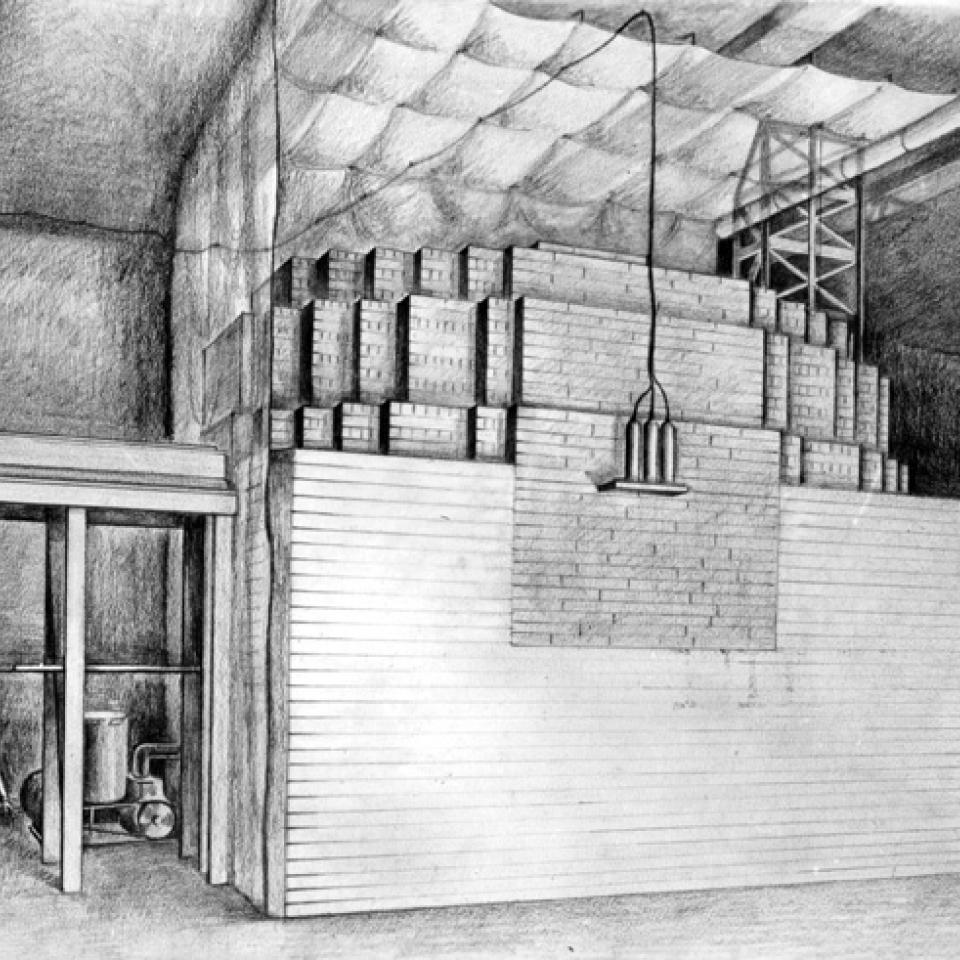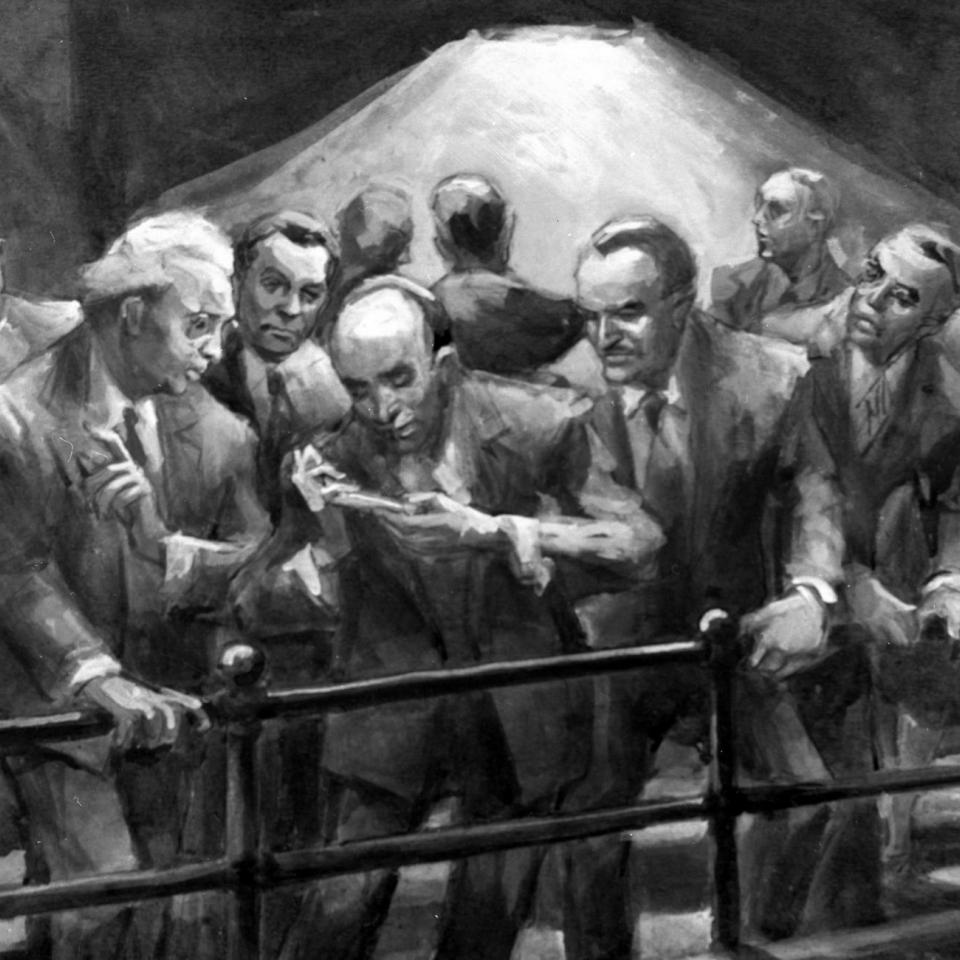Nuclear fission
The Accelerator Building comes down this year. These are the machines it was built to house.

A reflection on the nuclear scientists who gave Mao’s China the bomb.

The age of nuclear weapons has been remarkably peaceful, but danger is ever present.
The subject of controversy when it was commissioned, Nuclear Energy has become a constant in the UChicago landscape.
The story of the first controlled, self-sustaining nuclear chain reaction is one of science, of war, and of people—those who made the experiment a success, those who strove to inform the public about the threats the breakthrough posed, and those tending its ambivalent legacies today.
The scientists who made CP-1 possible, and the thinkers tending its ambivalent legacy today.
Enrico Fermi and Leo Szilard were comparable scientific visionaries but opposite personalities.
The University marks the 75th anniversary of Chicago Pile-1, the world’s first controlled, self-sustaining nuclear reaction.

